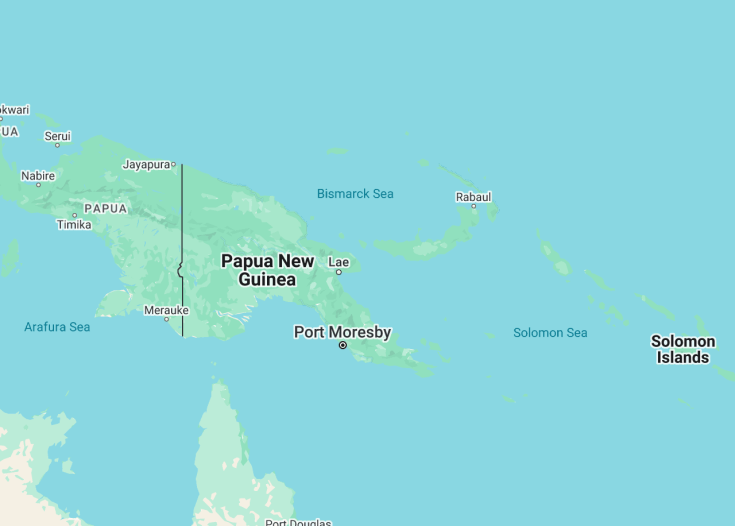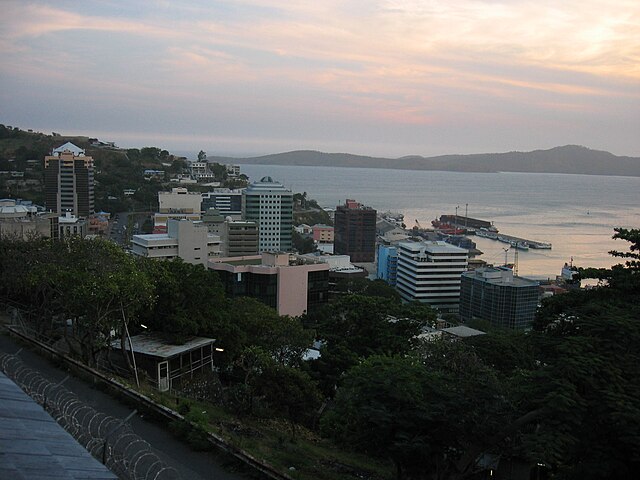Nestled in the southwestern Pacific, Papua New Guinea (PNG) is a mosaic of indigenous cultures, languages, and untouched landscapes. This diverse realm offers a journey through rainforests, mountain ranges, and coral reefs, echoing with ancestral stories. From the vibrancy of the Mount Hagen Cultural Show to the enigma of the Sepik River carvings, PNG beckons with a blend of tradition and nature. The nation’s rich tapestry is woven with over 800 distinct languages, making it a cradle of cultural richness in a setting of unparalleled natural beauty.
Ensure you respect local customs; in many areas, a small gift or token is appreciated when entering a village.
Traveling with local guides not only supports the community but also enriches your experience with firsthand insights and stories.
Top destinations in Papua New Guinea
Papua New Guinea: land of vibrant cultures and majestic landscapes
| Capital | Port Moresby |
| Time in Papua New Guinea | GMT +10 |
| Language spoken | English, Tok Pisin, Hiri Motu, and over 800 indigenous languages |
| Population | 8.9 million (Source: World Bank, 2021) |
| Religion | Christianity (96%) Traditional Religions (3%) Others (1%) |
| Currency | Papua New Guinean kina (K, PGK) |
| Airports | Jacksons International Airport Nadzab Airport Rabaul Airport |
Papua New Guinea (PNG) is a mosaic of cultural and ecological wonders. Located in the southwestern Pacific, this nation comprises the eastern half of the island of New Guinea and an archipelago of over 600 smaller islands. Inhabited for over 40,000 years, PNG is home to a rich tapestry of indigenous communities, with over 800 languages spoken. Its history is a chronicle of explorers, traders, and colonizers, from the Portuguese and Spanish expeditions in the 16th century to British and German colonization in the 19th century. Achieving independence in 1975, Papua New Guinea has retained much of its traditional cultures while navigating modern challenges.
Where is Papua New Guinea located?
Papua New Guinea occupies the eastern half of the island of New Guinea, north of Australia, and includes numerous smaller islands in the Pacific Ocean.
What is Papua New Guinea famous for?
Papua New Guinea is renowned for its incredible biodiversity, vibrant indigenous cultures, and traditional festivals, such as the Sing-Sing, where tribes showcase their unique customs and attire.
History
Earliest Inhabitants: c. 50,000 BC – 1500 AD
Archaeological evidence suggests that Papua New Guinea was inhabited as early as 50,000 years ago by the ancestors of the island’s current indigenous peoples. Over millennia, these communities developed diverse languages, cultures, and traditions, making Papua New Guinea one of the most linguistically diverse regions in the world.
European Exploration: 1526 – 1884
The first European to sight Papua New Guinea was the Portuguese explorer Jorge de Menezes in 1526. Over the centuries that followed, explorers such as Luis Váez de Torres and Captain James Cook charted parts of the coastline. However, due to the challenging terrain and formidable local tribes, interior exploration remained limited.
Colonial Era: 1884 – 1975
By the late 19th century, European powers began to formally claim parts of Papua New Guinea. In 1884, the northern region, known as Kaiser-Wilhelmsland, became a German protectorate, while the southern region, known as British New Guinea, came under British control. Following World War I, Australia assumed the administration of both territories, merging them into the Territory of Papua and New Guinea. During World War II, the territory became a significant battleground, with the Kokoda Trail campaign standing out as a particularly brutal confrontation between Japanese and Allied forces.
Road to Independence: 1945 – 1975
Post World War II, Papua New Guinea experienced significant socio-economic changes. The Australian administration began investing in education, health, and infrastructure. By the 1960s, there were growing calls for autonomy and self-governance. With increased local political awareness and international pressure on colonial powers to decolonize, Papua New Guinea was granted self-governance in 1973 and full independence on September 16, 1975, becoming the independent State of Papua New Guinea.
Modern Era: 1975 – Present
Since achieving independence, Papua New Guinea has navigated the complexities of nation-building, balancing the interests of its diverse indigenous communities. The nation has faced challenges, including economic dependency on mineral extraction, regional secessionist movements (most notably the Bougainville crisis), and governance issues. Despite these hurdles, Papua New Guinea has maintained its vibrant cultural heritage, with festivals, arts, and traditional practices playing a significant role in everyday life. As the country continues its journey into the 21st century, it seeks sustainable development, greater regional integration, and the preservation of its unique cultural legacy.
Visit Papua New Guinea
What to see and do in Papua New Guinea
Papua New Guinea offers a unique mix of natural beauty and cultural diversity. Here are some of the top attractions and activities to experience:
- Explore the stunning landscapes of the Highlands region, home to towering mountain peaks, lush valleys, and traditional villages.
- Visit the Kokoda Track, a famous hiking trail that retraces the steps of the World War II soldiers.
- Discover the rich marine life by snorkeling or diving in the crystal-clear waters of the islands and coral reefs.
- Immerse yourself in the vibrant local cultures by attending traditional festivals and ceremonies.
- Experience the thrill of whitewater rafting down the fast-flowing rivers.
- Take a cruise along the Sepik River to witness the unique art and architecture of the indigenous tribes.
Events in Papua New Guinea
Papua New Guinea hosts several cultural events and festivals throughout the year, showcasing the country’s diverse traditions and customs. Some notable events include:
- The Mount Hagen Cultural Show (August) – A vibrant celebration of the country’s tribal cultures, featuring traditional dances, music, and rituals.
- The Goroka Show (September) – One of the largest tribal gatherings in Papua New Guinea, showcasing traditional costumes, performances, and craft displays.
- The Canoe and Kundu Drum Festival (November) – A festival dedicated to showcasing the art of canoe-making and playing the traditional kundu drum.
Best time to visit Papua New Guinea
The best time to visit Papua New Guinea is during the dry season, which runs from May to October. This period offers pleasant weather with lower humidity and less rainfall, making it ideal for outdoor activities and exploring the natural beauty of the country. However, it’s important to note that Papua New Guinea has a tropical climate, and weather conditions can vary throughout the year.
Is Papua New Guinea worth visiting?
Papua New Guinea is definitely worth visiting for adventurous travelers and those seeking an authentic cultural experience. The country’s untouched natural landscapes, vibrant indigenous cultures, and unique traditions make it a fascinating destination. However, it’s important to be aware that Papua New Guinea can be challenging for some travelers due to its remote locations, limited infrastructure, and occasional security concerns. It’s essential to plan and prepare well in advance, seek local advice, and be respectful of the local customs and traditions. Overall, a visit to Papua New Guinea can offer a truly memorable and immersive experience.













